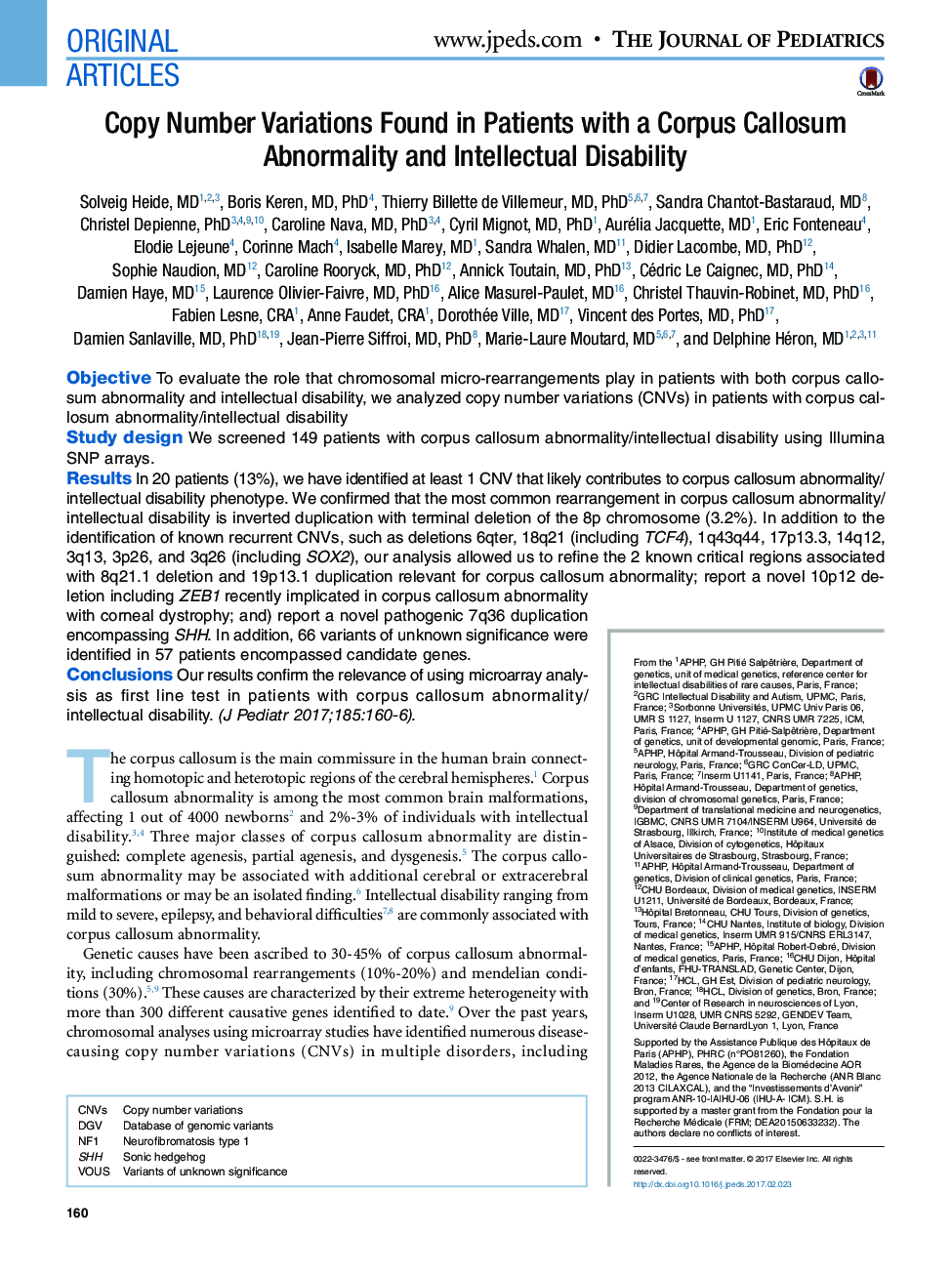| Article ID | Journal | Published Year | Pages | File Type |
|---|---|---|---|---|
| 5719133 | The Journal of Pediatrics | 2017 | 8 Pages |
ObjectiveTo evaluate the role that chromosomal micro-rearrangements play in patients with both corpus callosum abnormality and intellectual disability, we analyzed copy number variations (CNVs) in patients with corpus callosum abnormality/intellectual disabilityStudy designWe screened 149 patients with corpus callosum abnormality/intellectual disability using Illumina SNP arrays.ResultsIn 20 patients (13%), we have identified at least 1 CNV that likely contributes to corpus callosum abnormality/intellectual disability phenotype. We confirmed that the most common rearrangement in corpus callosum abnormality/intellectual disability is inverted duplication with terminal deletion of the 8p chromosome (3.2%). In addition to the identification of known recurrent CNVs, such as deletions 6qter, 18q21 (including TCF4), 1q43q44, 17p13.3, 14q12, 3q13, 3p26, and 3q26 (including SOX2), our analysis allowed us to refine the 2 known critical regions associated with 8q21.1 deletion and 19p13.1 duplication relevant for corpus callosum abnormality; report a novel 10p12 deletion including ZEB1 recently implicated in corpus callosum abnormality with corneal dystrophy; and) report a novel pathogenic 7q36 duplication encompassing SHH. In addition, 66 variants of unknown significance were identified in 57 patients encompassed candidate genes.ConclusionsOur results confirm the relevance of using microarray analysis as first line test in patients with corpus callosum abnormality/intellectual disability.
